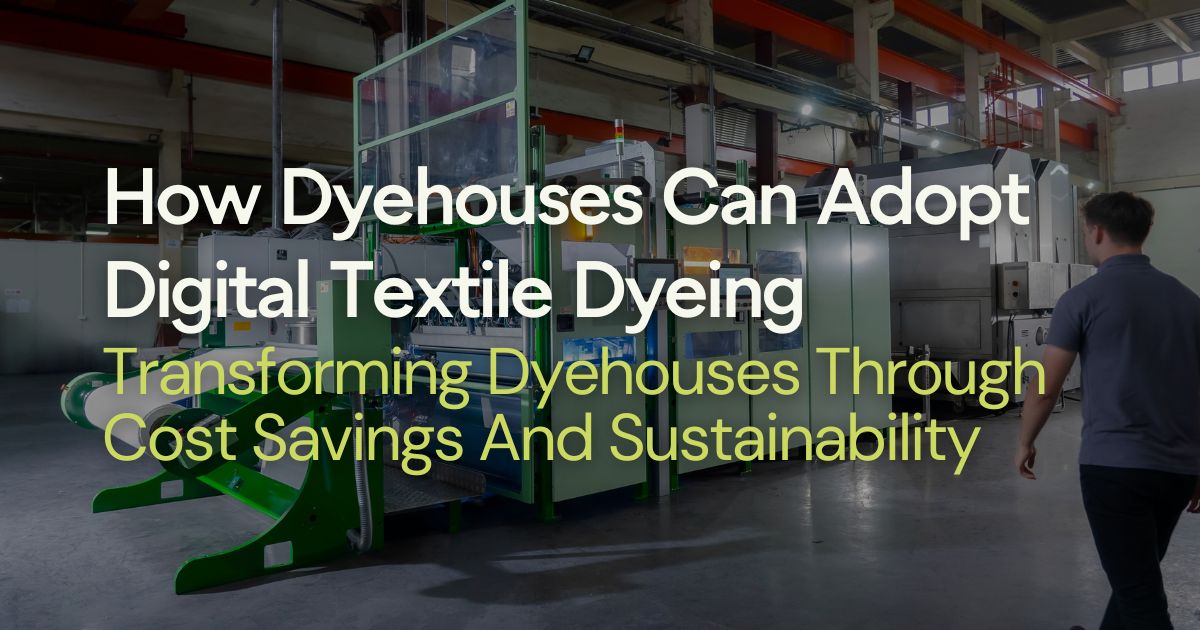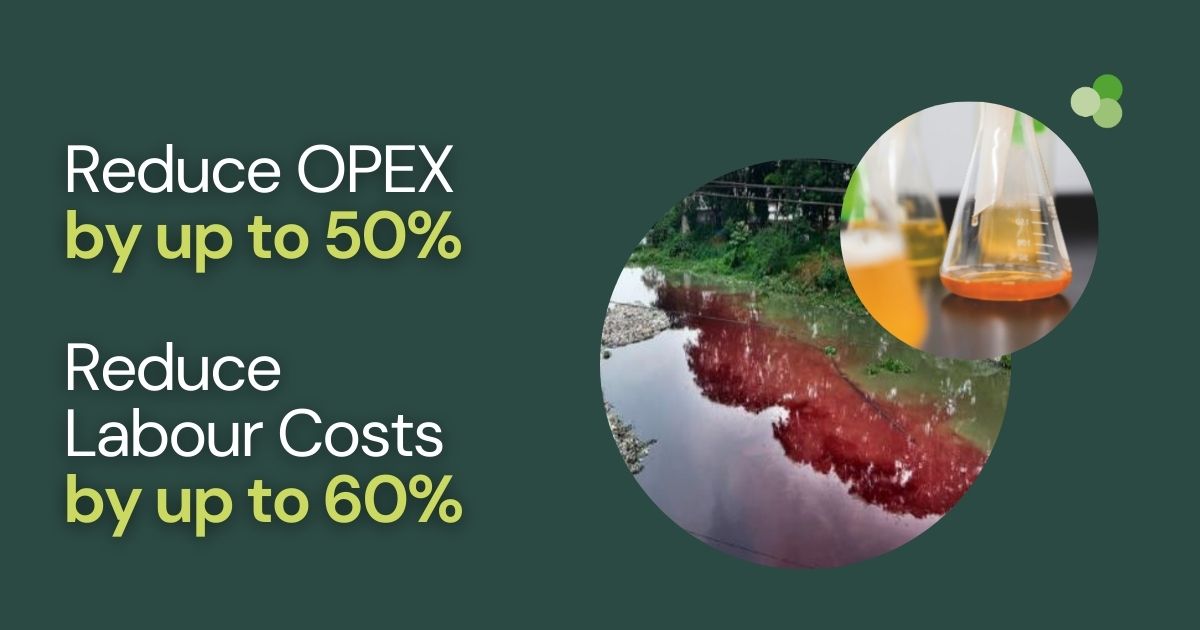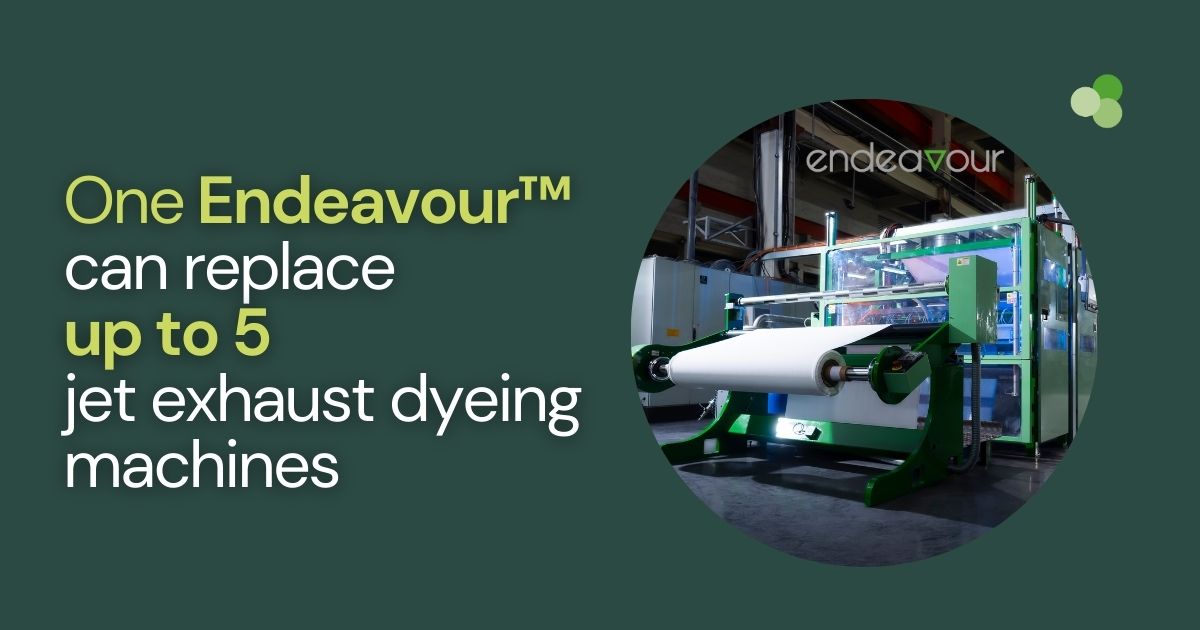 Traditional textile dyeing methods, such as jet exhaust dyeing and dye baths, have long been the go-to solution for hundreds of years when dyeing textiles. However, these conventional dyeing techniques come with high operational expenditure (OPEX), high labour costs, and significant environmental challenges.
Traditional textile dyeing methods, such as jet exhaust dyeing and dye baths, have long been the go-to solution for hundreds of years when dyeing textiles. However, these conventional dyeing techniques come with high operational expenditure (OPEX), high labour costs, and significant environmental challenges.
With the industry seeking clean-tech, sustainable, cost-effective alternatives, enter digital textile dyeing. Capable of reducing costs, minimising precious environmental resources, and streamlining production. Let’s explore how dyehouses can adopt digital textile dyeing solutions.

The Challenges of Conventional Textile Dyeing
Despite the long history of conventional dyeing techniques, the textile industry has allowed costly and time-consuming processes to become the status quo. High OPEX, high environmental impact, and production inefficiencies. The old ways are now costing you, particularly on your bottom line.
High Operational Costs (OPEX)
Traditional textile dyeing methods, such as jet exhaust dyeing and dye baths, have high operational costs due to excessive water and energy consumption. Jet exhaust dyeing relies on large water vessels heated with fossil fuels to temperatures of up to 135°C for both dyeing and washing, while dye baths reach up to 200°F using gas or electricity. These processes can take up to 4 hours, driving up energy bills, especially if defects like colour inconsistencies require reprocessing.
Additionally, the chemicals used generate effluent, adding to waste management costs. Beyond resource consumption, traditional dyeing methods also require manual oversight, particularly for colour performance. Labour costs, which vary by country, further increase operational expenses and escalate if reprocessing is needed due to quality issues.
High Environmental Impact
Traditional dyeing methods, such as jet exhaust dyeing and dye baths, require large land areas, leading to high costs for land acquisition and maintenance. These processes involve multiple washes, dye cycles, and drying stages, significantly increasing resource consumption. The apparel industry alone uses approximately 5 trillion litres of water annually for fabric dyeing, while dyeing just one ton of polyester generates 30 tons of toxic wastewater - contributing to 20% of global industrial wastewater pollution. The excessive use of chemicals, water, and energy results in a substantial carbon footprint. Additionally, these resource-intensive methods can disrupt production schedules and extend dwelling times, rather than enabling a seamless dyeing process.
Digital Textile Dyeing, The Sustainable and Cost-Effective Alternative
Our near-waterless digital textile dyeing technology revolutionises traditional dyeing by eliminating large dye baths and significantly reducing water, energy, and labour costs. Unlike conventional methods that consume up to 200 litres of water per kilogram of fabric and rely on fossil fuels, our electrified digital process cuts wastewater pollution by up to 95%, reduces energy consumption by up to 85%, and lowers labour costs by up to 60%.
One Endeavour™ line can replace up to five jet exhaust dyeing machines, halving the cost of dyeing polyester and cotton while optimising production efficiency. Additionally, our process enhances sustainability compliance by reducing chemical use by up to 30% and aligning with evolving Environmental, Social, and Governance (ESG) regulations. With superior colour consistency (ΔE ≤ 0.5), enhanced fabric quality, and greater production agility, digital textile dyeing not only streamlines operations but also prepares manufacturers for a sustainable, traceable, and cost-efficient future.

How Dyehouses Can Adopt Digital Textile Dyeing
Adopting our digital textile dyeing technology is simple and flexible, with business models tailored to your needs. Our advanced nozzle technology, integrated into both our Discovery digital lab dip system and Endeavour™ production-line system, enables precise, digital dye application, ensuring optimal fabric penetration while minimising waste. Whether you're looking to test and optimise dye recipes with Discovery (processing up to 5 metres per minute) or scale up with Endeavour™ (supporting widths up to 1.8 metres and speeds of up to 15 metres per minute), we provide solutions for both gradual implementation and full-scale transformation.
Reach out to us at enquiries@alchemietechnology.com to explore how we can tailor our digital dyeing solutions to fit into your operations.
Your Textile Factory of the Future
As demand for clean-tech and sustainable solutions continues to rise, digital textile dyeing is the preferred alternative. Major brands like H&M have already embraced digital textile dyeing – and it’s easy to see why. Our technologies can cut your OPEX by half, eliminate wastewater, reduce energy consumption, significantly boost production efficiency, while benefiting the planet.
Through digital textile dyeing you can build your textile factory of the future now, to lead the way in sustainable textile manufacturing. With our Discovery and Endeavour™ systems at your fingertips, you can seamlessly integrate our transformative technology and join us in creating a world with zero pollution from textile dyeing and finishing.
